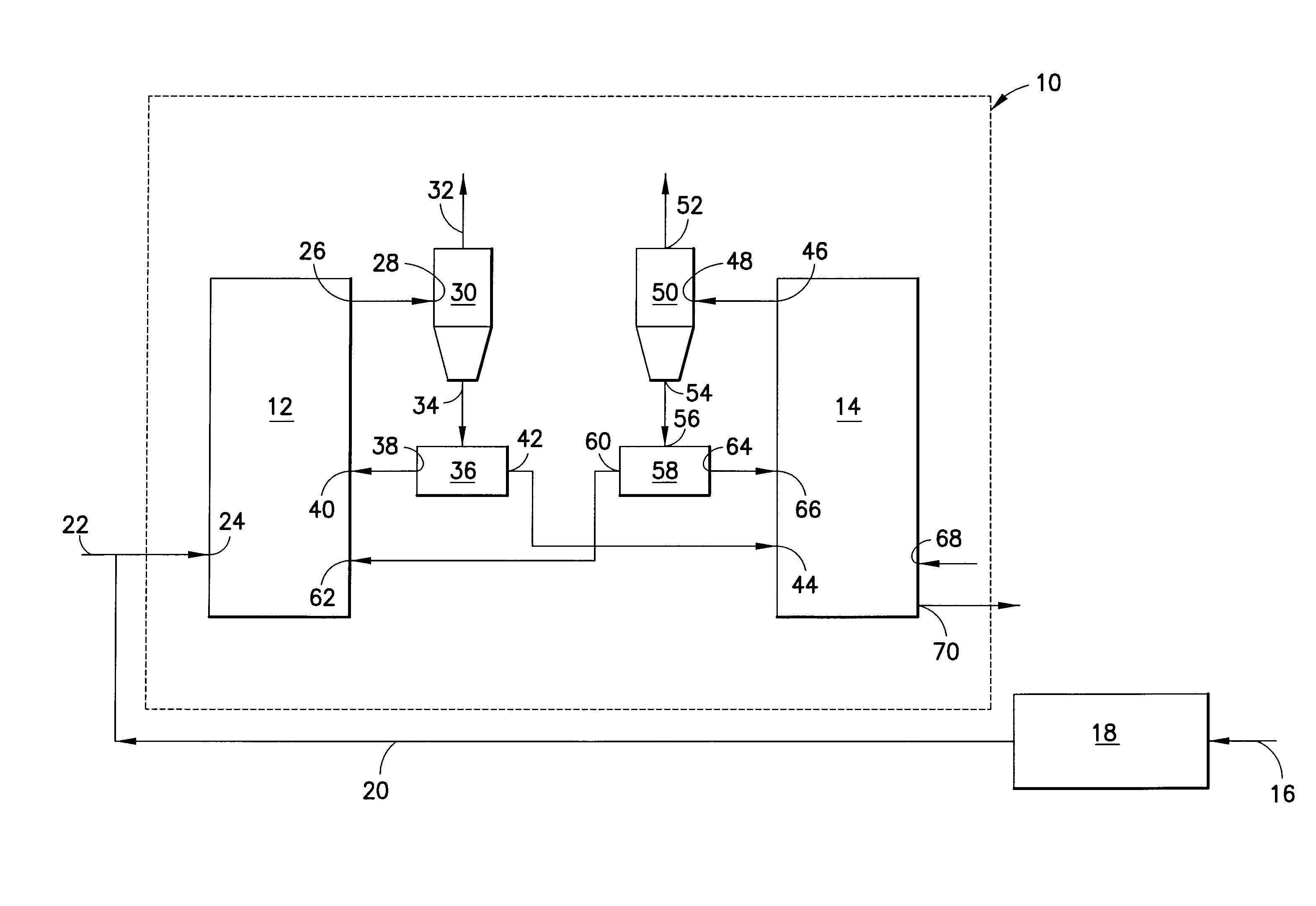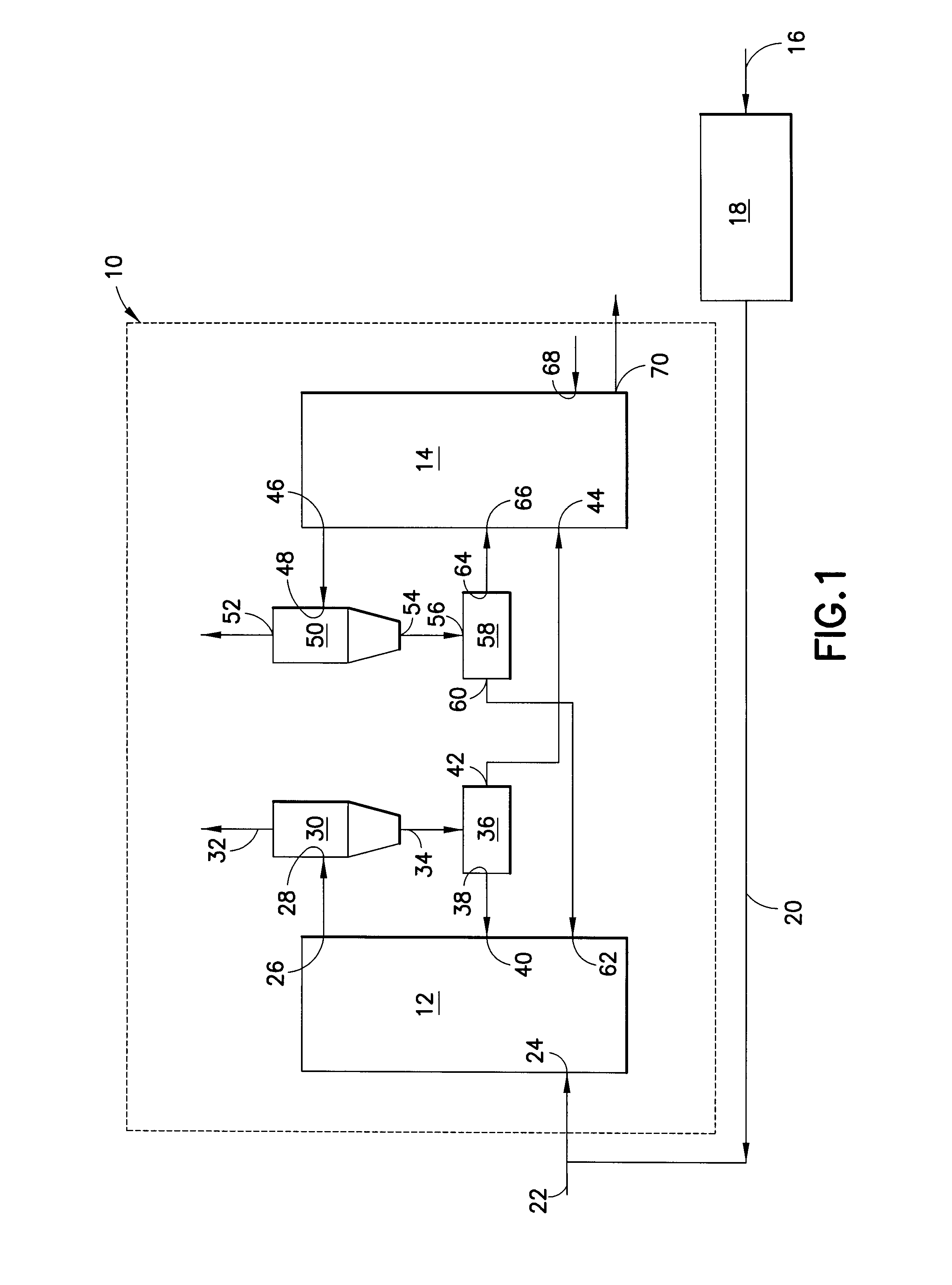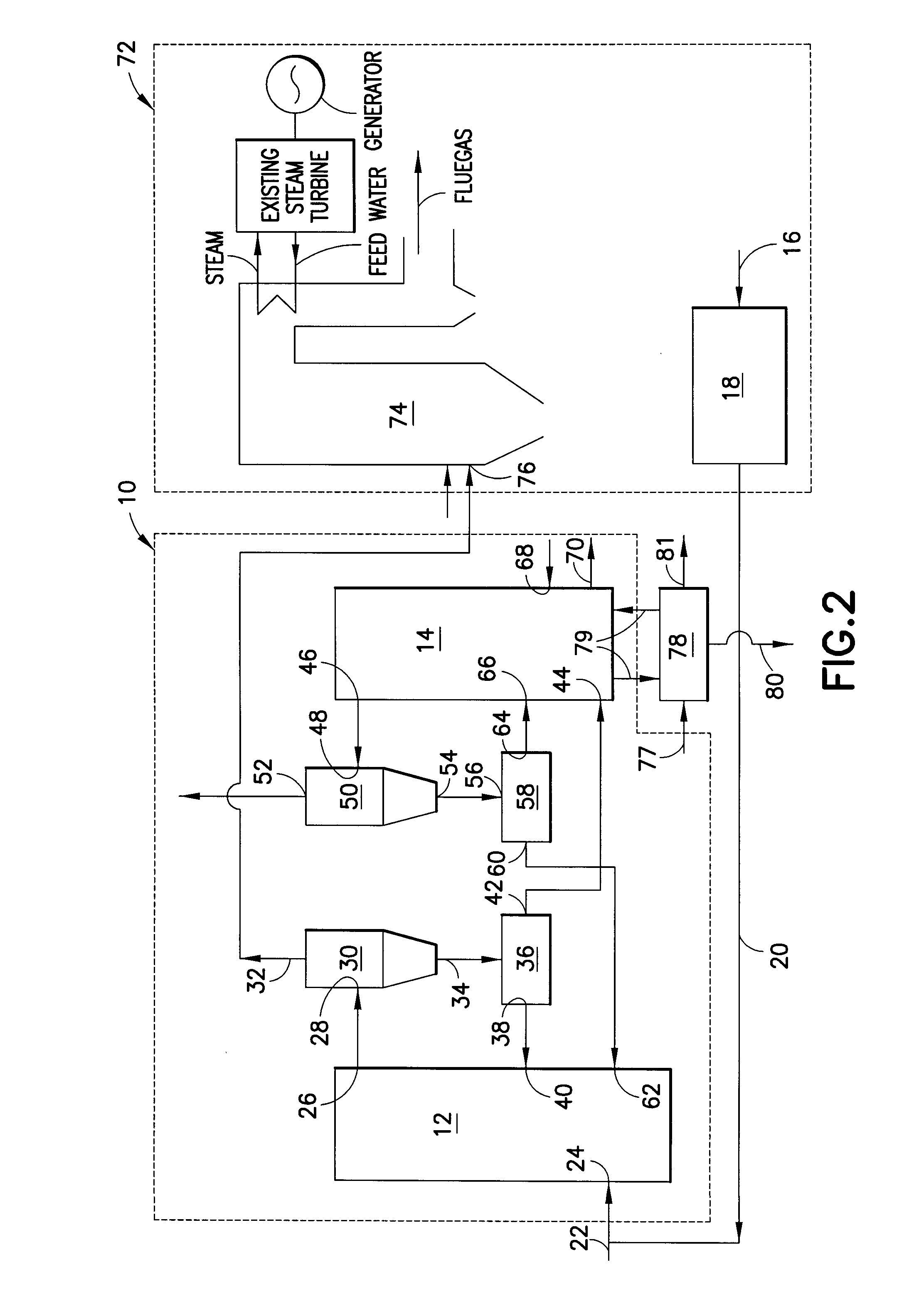System for hot solids combustion and gasification
a hot solids combustion and gasification technology, applied in the field of co2 capture, can solve the problems of substantial capital equipment and land space, insufficient reductions to achieve atmospheric cosub>2 /sub>stabilization, and insufficient reductions to achieve the effect of atmospheric cosub>2 /sub>stabilization
- Summary
- Abstract
- Description
- Claims
- Application Information
AI Technical Summary
Benefits of technology
Problems solved by technology
Method used
Image
Examples
Embodiment Construction
[0022]As shown in FIG. 1, a chemical looping system is generally designated by the reference number 10 and is encompassed by the dotted lines shown in the figure. Chemical looping is described in U.S. Pat. No. 7,083,658, the contents of which are incorporated in entirety by reference herein. The chemical looping system 10 includes an endothermic reducer reactor 12 and an oxidizer reactor 14. Fuel, in the form of coal and CaCO3 (limestone) are fed via conduit 16 into a coal preparation device 18. The coal preparation device 18 can form part of an existing power plant such as, but not limited to, a pulverized coal or fluidized bed power plant, to which a chemical looping system can be retrofit. The coal and CaCO3 are fed through conduit 20 to an inlet 24 into the reducer reactor. Steam is also fed via conduit 22 into the reducer reactor 12 via the inlet 24. However, the coal, CaCO3 and the steam can also each be fed into the reducer reactor 12 through separate inlets. Moreover, while ...
PUM
 Login to View More
Login to View More Abstract
Description
Claims
Application Information
 Login to View More
Login to View More - R&D
- Intellectual Property
- Life Sciences
- Materials
- Tech Scout
- Unparalleled Data Quality
- Higher Quality Content
- 60% Fewer Hallucinations
Browse by: Latest US Patents, China's latest patents, Technical Efficacy Thesaurus, Application Domain, Technology Topic, Popular Technical Reports.
© 2025 PatSnap. All rights reserved.Legal|Privacy policy|Modern Slavery Act Transparency Statement|Sitemap|About US| Contact US: help@patsnap.com



